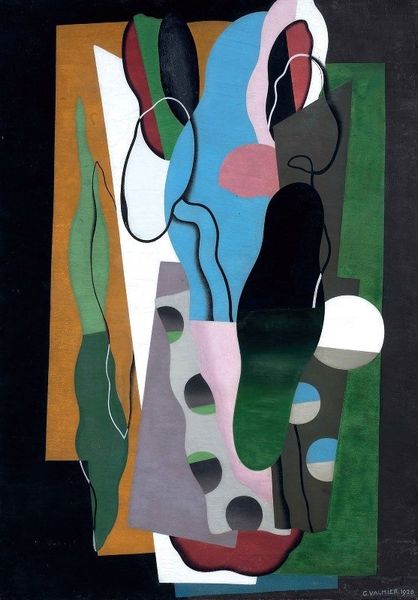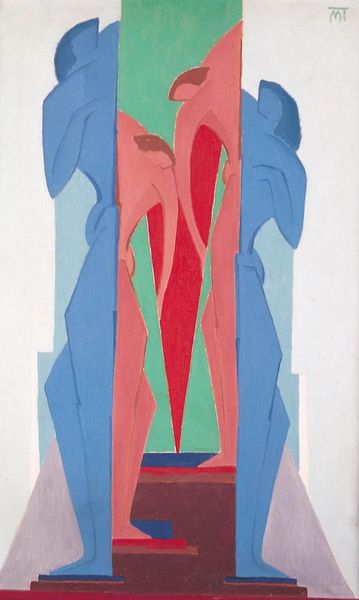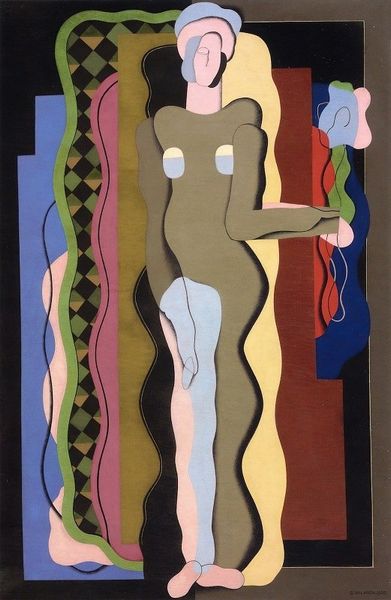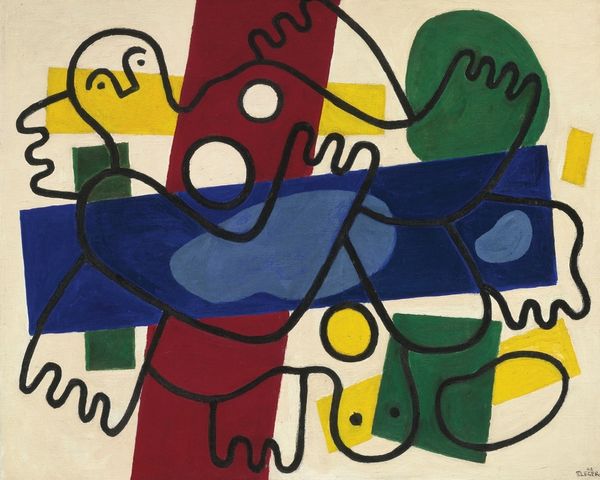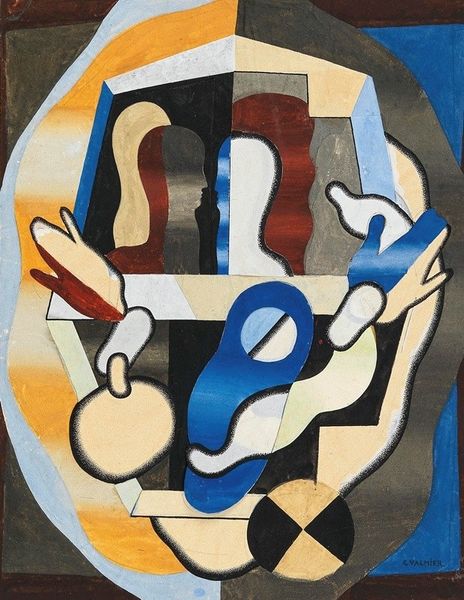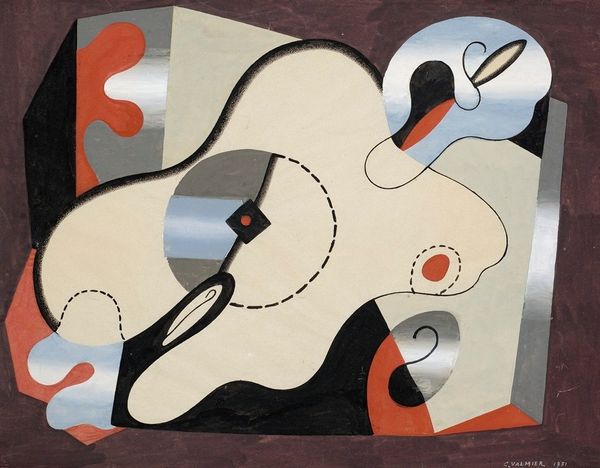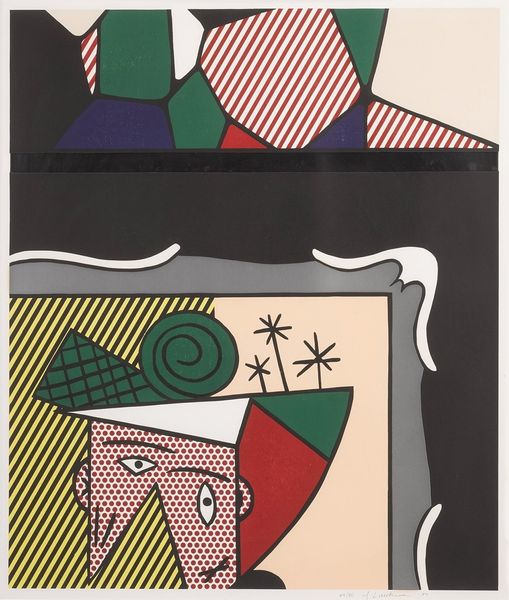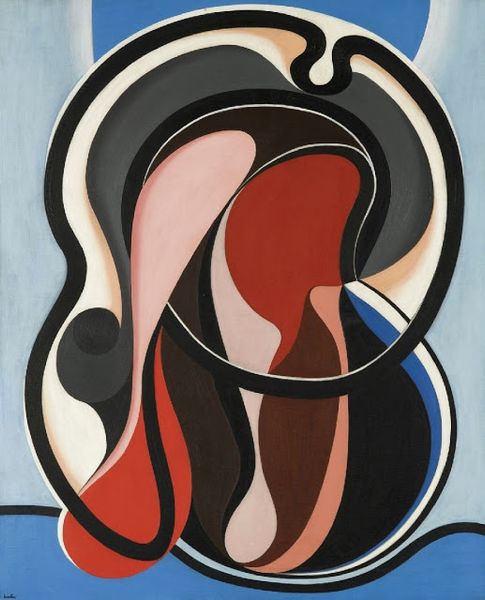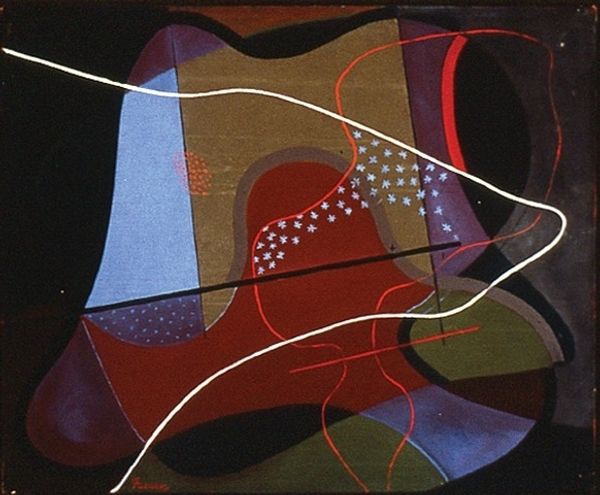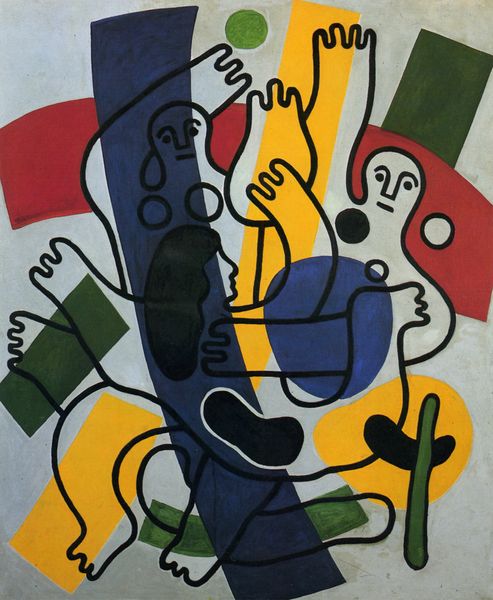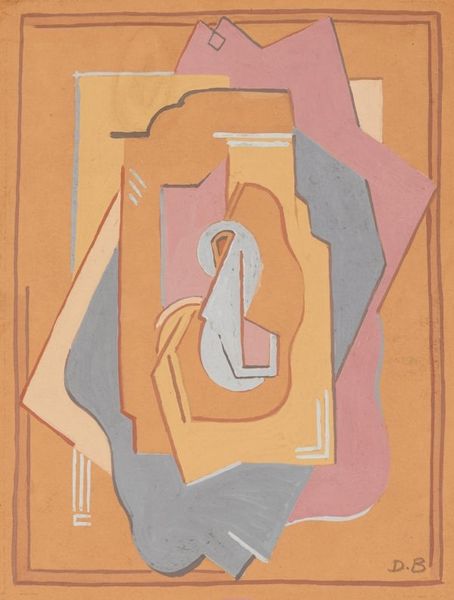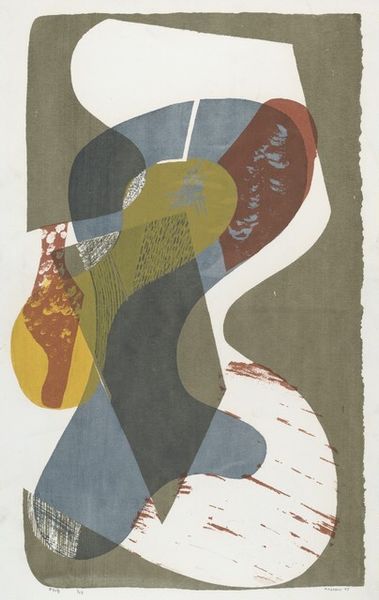
painting
#
art-deco
#
cubism
#
abstract painting
#
painting
#
figuration
#
mural art
#
abstract
#
form
#
geometric-abstraction
#
line
Copyright: Public Domain: Artvee
Editor: Here we have Georges Valmier's "Eve," painted in 1930. It's an intriguing painting with abstract forms that vaguely suggest a figure. It strikes me as quite dreamlike, almost surreal. What do you see in this piece? Curator: It's interesting that you use the word dreamlike, because for me, the layering of geometric abstraction and figuration in "Eve" reflects the social anxieties of its time. The 1930s saw a lot of shifts in cultural norms. Does the title "Eve" guide your interpretation? Do you consider her as the biblical character, or maybe an idea? Editor: I initially considered the biblical reference, but the abstraction makes it hard to stick with that interpretation. Perhaps the "Eve" is more of an exploration of form? Curator: Exactly! Consider how Valmier plays with Cubist fragmentation and Art Deco's streamlining. It's not just about depicting a woman, but about challenging conventional representation of women. Look at how she’s deconstructed and rebuilt. Can you sense a dialogue around female identity that moves away from patriarchal representations of women as either virgin or seductress? Editor: That's a fascinating way to look at it. It’s like Valmier is grappling with redefining femininity through abstraction, breaking down these outdated ideas about how women are "supposed" to be. The geometric shapes don’t offer easy answers, but invite inquiry. Curator: Absolutely. It's a testament to how art can participate in broader conversations around gender and identity. It makes you think about representation. Editor: I see it now. I had approached "Eve" as purely formal, but understanding its cultural context reveals a whole new dimension. Curator: Precisely! Art's true power often resides in its ability to mirror and question the very society from which it emerges.
Comments
No comments
Be the first to comment and join the conversation on the ultimate creative platform.
